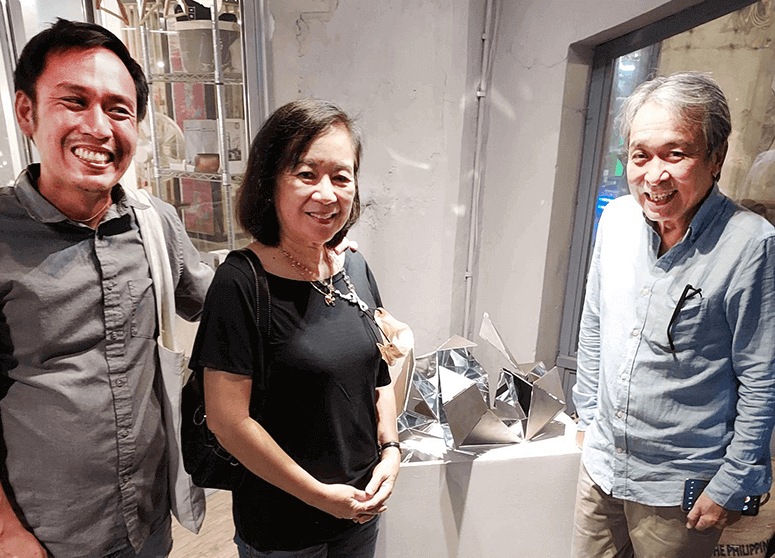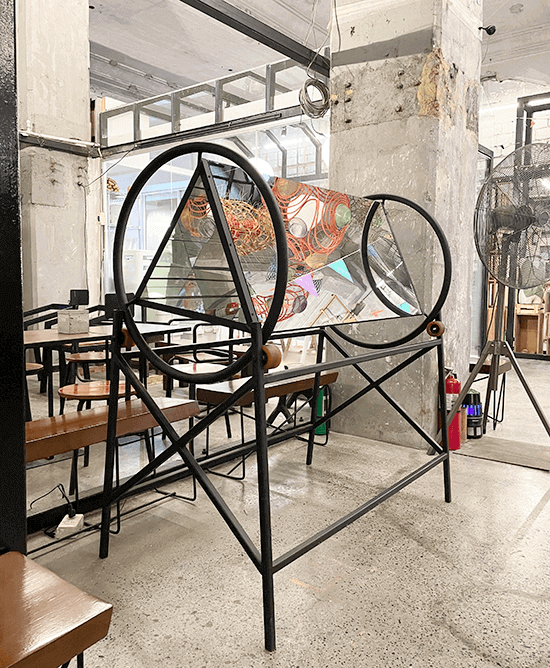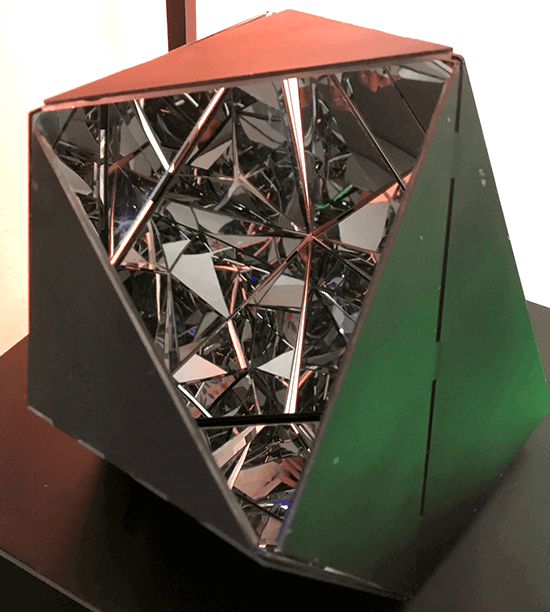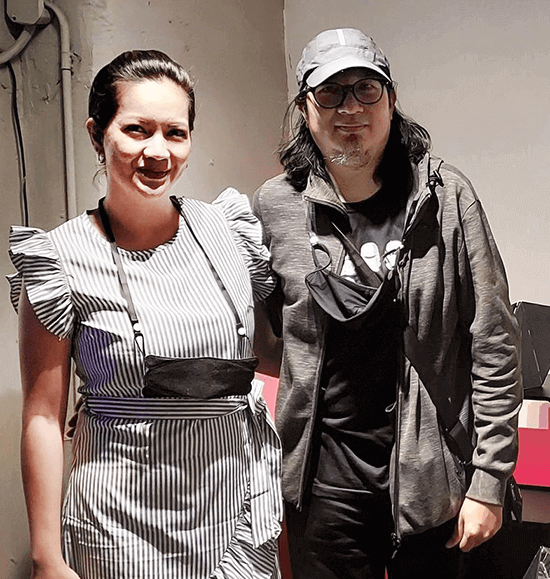The art of Marco Ortiga: Through the looking glass, weirdly
We live in an era where things are getting curiouser and curiouser: there is a strange disconnect between subjective interpretation and objective reality. Facts, history, empirical evidence are being supplanted with wild, moronic conspiratorial dumbfu*kery. Jewish Space Lasers and Gazpacho Police, anyone? How about those fantastic tales of gold?
Marco Ortiga may or may not have been thinking along those lines, but, in his latest exhibition titled “Phantasmagoria,” the conceptual artist holds a mirror up to this “see-me world” — and instead of showing clarity and reflection, purveys cracks and malformation. As writer Kara Ortiga details in the exhibition statement: “(Marco) structures mirrors into kaleidoscopic lenses, rigging three mechanisms as tools for viewers to pause and reflect upon their reflected realities… but the repaneled glass echoes not an image of accuracy but that of distortion.”

To some viewers, it may come across as the dark side of the moon meets ‘‘through the looking glass’’ meets this present societal, narcissistic hellscape we are in. Talking to Marco, though, you get the impression his art comes from a more reflective place.

Originally, he thought of making a big kaleidoscope to be put in random places (farm, beach, valley) to take videos of its surroundings. “The video would be the output, not the kaleidoscope. The main idea was that the sculpture is simply a tool and the art would be up to the viewer to discover on his own. In a sense, that is the whole concept of ‘Phantasmagoria.’ Everything is meant to be experienced by the viewer. The experience of looking into the sculpture or the kaleidoscope is ‘discovering’ the art yourself. The art is in the experience and not in the object itself.”

Are the kaleidoscopes metaphors for what? The subjectivity of Truth which is supposedly objective? Self-reflection? Flawed vision?
I like figuring out how things move with simple mechanisms, small movements that can really make the art both interactive and beautiful. In the past, I made use of the crank system.
Marco explains, “Normally, we would put heavy meanings and metaphors to our artworks for the viewers to understand or interpret. For me, I wanted this to be a fully interactive experience, for each person’s point of view to be the art itself. What you see when you look into the work will be something that only you will see. The person next to you will probably see something similar but not exactly the same. In a sense, it’s the viewer who makes the art: each point of view being uniquely his own.”

The shard that connects the “Phantasmagoria” pieces with Marco’s past conceptual pieces is: interactivity. “I like it when looking at the artwork in itself is simply not enough; the viewer has to interact with it for it to fully come to life,” he says.
Ortiga is also obsessed with mechanical systems, creating everything from a tabletop sound instrument to a contraption of 50 custom-built rainsticks to recreate the sound of rain.

“I like figuring out how things move with simple mechanisms, small movements that can really make the art both interactive and beautiful. In the past, I made use of the crank system. It’s simple and involves the viewer more. This is my first time using a motor for a kinetic piece. I used skateboard wheels to make the kaleidoscope operable and make it spin.”

And spin, too, our heads must: images in this “Phantasmagoria” show are in constant a state of flux, nothing is permanent, everything is temporary, if-you-stare-into-the-abyss-it-does-stare-back kind of thing… and yet we the audience are the creators here. This is the world of our making. What you get is what you give. It can be monstrous and flawed. But, flipping hell, it can also be real and spectacular.
* * *
Marco Ortiga’s “Phantasmagoria” is on view until the end of October at The Den Manila, 413 Escolta St., Manila. For information, visit The Den Manila on Facebook.


